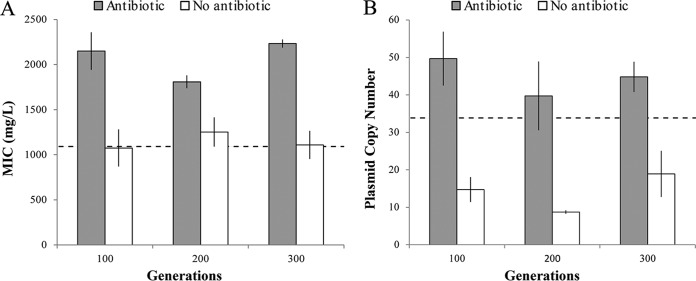FIG 3.
Ampicillin resistance level and plasmid copy number during experimental evolution. The presence of ampicillin is associated with a higher PCN and ampicillin resistance level in the evolving populations. Graphs represent the resistance level (A) and plasmid copy number (B) during the experimental evolution of H. influenzae Rd carrying both pB1000 variants in the presence and absence of ampicillin. Bars represent the SEMs. The black dashed lines represent the resistance level (A) and the plasmid copy number (B) of the parental H. influenzae Rd KW20 carrying both pB1000 variants at the beginning of the experiment. Note that the populations evolved in the absence of ampicillin showed a decrease in plasmid copy number compared to that of the parental strain (two-tailed t test; P < 0.005; t = 2.04; df = 28), but they showed no decrease in the ampicillin resistance level compared to that of the ancestral strain (two-tailed t test; P = 0.608; t = 2.07; df = 28). This effect is probably due to an increase in the fitness in the evolving populations compared to that of the parental strain (due to general adaptation to the experimental conditions) which, as we reported before, also produces a moderate increase in the ampicillin resistance level (11).

